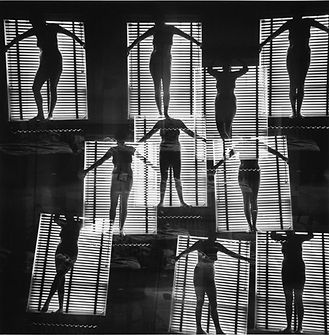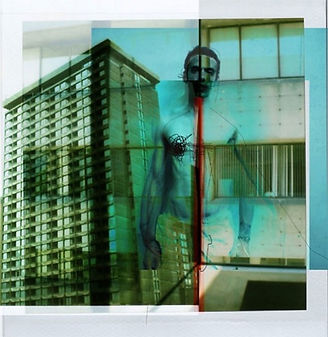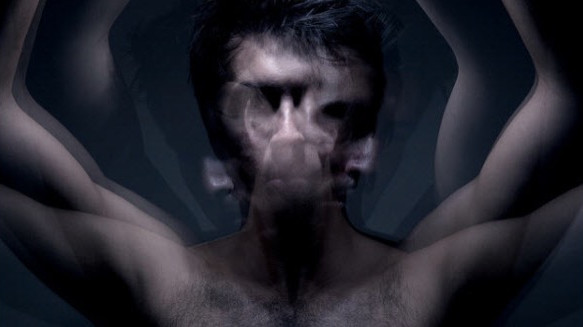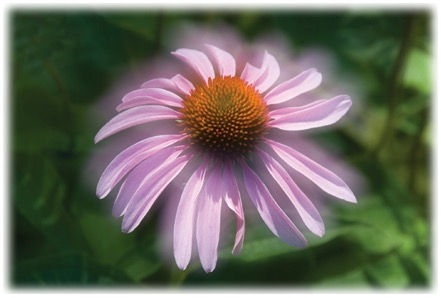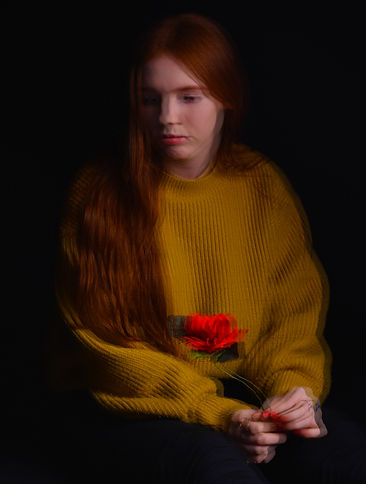Cyanotype
The Cyanotype process was invented by the English polymath Sir John Henry Herschel in 1842.
Herschel was an astronomer, chemist, mathematicaian and natural philosopher, he was particularly interested in the scientific applications of the emerging medium of photography
Unlike the silver process used in traditional black and white photography, cyanotype photographs are made using a solution of iron compounds that react to UV light. Images can be taken with a camera or made by placing objects directly on the paper (photograms).
The simplicity of the cyanotype printing makes it a great introduction to those new to alternative process printing with its beautiful tonality and artistic flexibility it is also recommended for serious fine art practitioners.
Engineers used the process well into the 20th century as simple and low cost process to produce copies of drawings i.e. Blueprints, the process only used two chemicals which were Ammonium Iron (III), Citrate and Potassium Ferricyanide.
The process
Cynaotypes are made using Potassium Ferricyanide and Ferric Ammonium Citrate mixed together.
You apply this photosensitive solution to any receptive surface such as paper or even cloth and then you must place it in a dark room to dry, after the solution has dried out you must expose the image and your negative using UV light, the result is a either a blue or cyan image, you would then rinse the image which removes the yellow unreacted solution from the paper or cloth.
Examples of photograms
Examples of blue/cyan photographs
Research based on toning cyanotype
Toning a cyanotype involves two basic steps: -
- Bleach phase
- Toning phase
Every toner contains some type of tannin; tannin chemically binds to the iron in the emulsion and changes the colour which produces a form of gallic acid - used in dyes and inks.
Toners are amazing because your able to combine different ones and change the sequence of bleach and toner and get a variety of different and unique results.
There are toning preparations which involve:
- Age your prints at least 24 hours for the emulsion to harden.
- Pre-wet your prints in filtered water to allow the solutions to penetrate the paper fibres evenly.
- Always have multiple prints because toning is so changeable that you never know what your prints are going to turn out like.
- Plan to leave the print face down for long periods of toning time or just plan enough time to watch the print i.e. agitate the image within the solution while it is face up in the toner.
The beginning step is the bleach phase which is the difficult part of the process.
The reason behind bleaching is because it helps break down the particles of iron a little bit so that the tannin in the toner can grab on easily, however if your water is heavily chlorinated you might not even need to bleach your prints because the chlorine breaks down the particles just as well.
The amount of bleach you use depends on how you coat, how much emulsion is on the paper itself and what type of toner your planning on using.
Bleaching is a difficult process and the reason behind that is because if you bleach too far you can loose the shadow density within your photograph however if you dont bleach enough your shadows will stay a stubborn blue shade while your lighter areas will co-operate distinctively.
There are quite a few bleach solutions you can use but the most common is Sodium Carbonate which is washing soda, it can be found within a photography chemical supply store or even your local supermarket.
The other types are Ammonia and Regular Chlorine Bleach.
Amonnia has a very distinctive smell which is horrible and produces much browner images whereas Chlorinated Bleach destroys paper fibres.
You must always rinse the print well in running water between the bleach and the toning phase to get rid of any excess product on the paper/cloth.
The second part is toning, certain toners are more efficient and stain less whereas other toners produce a wider range of possible colours, all toners do stain your paper base a little.
All cyanotype toners are pretty much variations on a black/brown/purple theme.
There is so many different types of ways you could tone, thats from tea toning to coffee toning, its remarkable on what you can use to achieve such fascinating imagery.
Tea Toner: - Every type of tea has a different quality off colour to it - white tea, red tea and most herbal teas don't have enough tannin to do anything to your print.
To use a teabag you would boil about 8-10 tea bags for 10 minutes in 250 ml of boiling water then add 1.5 litres of room temperature filtered water.
Normal Tea bags Green Tea Bags
Tea toners work incredibly well with a minimum amount of bleach but they do require longer immersion for the iron to shift, tone prints can take about 2 hours in tea however depending on the print I can take up to 8 hours for the print to take to the tea, tea toners should be used freshly brewed because they loose colour and strength after a day and they should never be re-used.
Green tea produces an eggplant/black shadow, it actually is really mild and it doesn't stain the paper base too much, if you are toning a high key image green tea will sometimes produce a pink highlight.
Black tea will stain the paper the most however it does produce a more warm black/brown shade and looks stunning on a photograph.
Earl Grey Tea Should definitely be avoided, it has a lot of oils in it that can damage your print.
Tannic Acid Toner is hard to work with, it can produce the closets colour to a strong black, but it is definitely more risky to take this chance because it can go completely wrong or even produce a purple/brown shade.
Tannic Acid Toner has a wide range of colour tones but you have no control over what the outcome is and you have to be extremely careful with not over bleaching because this specific toner can just ruin the whole piece of work if the bleaching phase has been overdone just by the slightest bit however this toner produces the least paper staining.
Coffee Toner is a much colder tone unlike the tea toners which are warmer, coffee does leave the paper pretty close to the original colour but it does still stain but just not as significant as tea does however coffee doesn't produce a true black but more of a blue/black.
Coffee toner doesn't take as long as tea toner does, but still expect to be toning for about an hour or just a bit longer.
To create the toner you would have about 4-5 tablespoons of coffee dissolved into 250ml of boiling water and then 1.5 Litres of filtered room temperature water is added to the mixture.
Wine Tannin this produces gorgeous dark shadows and a brown/tan highlight, the solution can be very fickle if you keep the solution for a long period of time however Wine Tannin is basically the same thing as tannic acid but it is produced from a different source, its solution is also a lot easier to mix unlike the Tannic Acid.
Wine Tannin does leave the paper practically white.
Three cyanotype photographers
















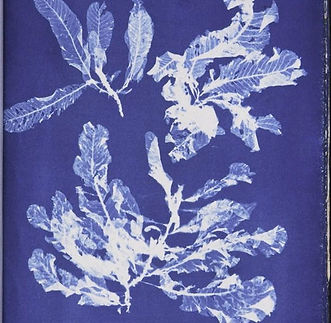


Anna Atkins
born on March 16th 1799 and died June 9th 1871 (age 72)
She died from paralysis, rheumatism and exhaustion.
Anna Atkins had a husband called John Pelly Atkins
She was best known for her very early botanical photographs, 1843 book - Photographs of British Algae: Cyanotype Impressions (1st book illustrated with photographic images).
Her influences consisted of John George Children (Her Father), William Henry Fox Talbot and John Herschel.
Anna Atkins was an English botanist and photographer, she is often considered the first person to publish a book illustrated with photographic image. Because John George Children and John Pelly Atkins were friends with William Henry Fox Talbot, Anna learned directly from Talbot about two of his inventions related to photography: The “Photogenic drawing” technique - You place an object on light-sensitized paper which is then exposed to the sun to produce an image – And Calotypes.
Anna was known to have access to a camera by 1941, some sources claim she was the first female photographer where others recon Constance Fox Talbot was the first female photographer and because neither of their camera-based photographs survived it is unsure who is the true first female photographer.
Sir John Herschel’s (A friend of Atkins and Children) invented the cyanotype photographic process in 1842 made Atkins feel intrigued about the process so within the year it was invented she applied the process to algae i.e. seaweed, she made cyanotype photograms that were contact printed.
Anna self-published her photograms in the first instalment of photographs of British Algae: Cyanotype Impressions in October 1843. In total Atkins produced a total of three volumes and with only 17 copies of the book are known to exist.
During the years of 1850 she collaborated with Anne Dixon who was deemed “like a sister” to her, they both produced at least three presentation albums of cyanotype photograms.
Atkins retained the algae, ferns and other plants that she used in her work and in 1865 donated the collection to the British Museum, in which she later died at Halstead place in 1871.
Lia Halloran
born in 1977, she is an American painter and photographer who lives and works in Los Angeles.
Lia’s studio work is in constant dialogue between art and science, her work interweaves ideas of the natural world with those of physicality, sexuality, intimacy and movement, her projects blend these ideas with the physics of motion, Lia has been in several collaborative projects which include co-curating exhibitions:
-
Rebecca Campbell (Better Far Pursue A Frivolous Trade By Serious Means, Than A sublime Art Frivolously)
-
Dr.Lisa Randall (Measure For Measure)
Halloran’s work has been featured in numerous publications:
The Los Angeles Times
The New York Times
The New Yorker
New York Magazine
The Boston Globe
Art News
Lia continues the theme of exploring scientific classification systems by re-investigating the timeline of discovery to unearth the influential women in its groundings, her large-scale series of cyanotypes is dedicated to the women of astronomy who she believes are overlooked.
From the late 1800s to the 20th century there is a group of women known as the “Harvard Computers”, Lia’s work and the help of “Harvard University” references the photographic plates used by these women to catalogue their research
Lia was able to conduct extensive research on these women in order to create astonishing images of the night sky using cyanotype print, the reason she used this method because the process mimics that of the “Harvard Computer’s Astronomical Plates” which essentially creates a photographic print without the use of a camera.
Lia’s work did not dwell on the accuracy of her work but instead offers the active experience, being able to re-ignite the spirit of the universe and creating such breath-taking pieces of work which also contributes to those women who were always classed as “un-important” in today’s society and back in the day.






Bertha Evelyn Jaques
She was born October 24th 1863 in Covington, Ohio and died March 30th 1941 in Chicago, Illinois (Age 78).
Bertha had a husband, William Jaques who was extremely supportive of his wife’s artistic career, he used to purchase her equipment and materials and also hired domestic help to allow Jaques to focus on her art entirely, she had made more than a thousand cyanotype photographs in addition to her etchings.
Bertha was an American etcher and cyanotype photographer, she also did not come into printmaking until she was in her 30ths
She helped find the Chicago Society of Etchers which was an organization that would become internationally significant for promoting etching as a popular printmaking technique. Bertha is best known for her hand-coloured botanical prints and scenes from her foreign and domestic travels.
Bertha was largely self-taught, she used to combine her interest in nature and the environment with her desire to explore the etching process which she happened upon at the 1893 Columbian Exposition World’s Fair in Chicago.
With her interest on etching she also explored the art of the photogram through the cyanotype process producing strikingly modernist silhouettes of her subjects from nature.
Between the years of 1905 and 1910, Mrs Bertha Evelyn Jaques made numerous blue prints of flowers and plants, she used to place the flowers on a window (Glass) and then put the sensitive side of the paper underneath and exposed it to the sun.
Bertha succeeded in the field which was mainly dominated by male artist however she also helped popularize etching in America, Jaques full impact on printmaking and photography at the dawn of the twentieth century is still under-recognized.
The Cedar Rapids Museum of Art possess the most complete collection of Bertha Jaques work which includes her cyanotypes and her personal archives.
Multiple Exposure
Multiple Exposure - it is the superimposition of two or more exposures to create a single image, you basically put two or more captures on top of each other in a single image multiple to create the potential of impact and opens up a variety of different creative expressions.
Artist examples
Harry Callahan - he was a twentieth century American photographer, he was born on 22nd October 1912 (Detroit, Michigan, United States), Died 15th March 1999 (Atlanta, Georgia, United States). He was considered one of the greatest innovators of modern American photography.
Harry began photographing in 1939 as an autodidact - by 1946 which he was appointed by László Moholy-Nagy to teach photography at the institute of Design in Chicago.
He retired in 1977 which he was at the time teaching at the Rhode Island School of Design.
Harry left nothing behind of his work process i.e no written records, no diaries, letters, scrapbooks or even teaching notes - he just used to go out almost every morning, walk around the city he lived in and take a wide amount of photographs - he would then spend a whole afternoon making proof prints of that days best negatives however he only produced no more than half a dozen final images a year.
The materials which I think harry used was photographic paper and film however the way he produced this is by overlapping two negatives together, a variety of his photographs do portray emotion i.e the third photograph with the young boys face behind a window and mealworms surrounding him is very emotive, also the fourth photograph shows the concept of body shaming in my opinion, the way he has chosen to develop and produce his photographs definitely compliment his chosen work because they bring out the emotion and the concept of what he is trying to portray.
Floria Sigismondi - Floria is an Italian - Canadian photographer and director, she was born in 1965 in (Pescara, Italy) and is age 53.
Floria is a multi-disciplinary artist who encompasses fields such as film, video, photography and sculpture. Her photographs exist in a theatre environment that are both narrative and harsh visually. Her influences which range from Hans Belmer, Francis Bacon and David Lynch to Greek Mythology.
The materials which I think Floria uses is different sculptures/art design models which she has crafted to create her images, she also uses a digital camera to be able to get the effects which she has produced, the way she has produced these images is by combing a variety of different photographs into one by using "photoshop" and then changed the colours and contrast of the pictures to give them a more vulnerable and creepy atmosphere towards them.
The way her photographs make me feel is uncomfortable because they are unusual and nothing you would normally see within photography, it definitely makes you feel nauseous because of the satanic vibe which these images produce, the narrative behind the photographs make me feel on edge because you don't know all the context behind the meaning of the images.
The materials and technique compliment her work incredibly because they make you feel vulnerable through an image and thats spectacular being able to get that type of feeling from an image, I personally don't believe she could of done her work in any other way because its such a fantastic contrast of how she has portrayed them.
Digital vs Film
To create multiple exposure you can use photoshop i.e overlaying the layer and using blending options however you can also use a Nikon Dslr camera on its own to produce the same effect and this process is usually a lot easier than the film option ( two photographs in one negative. )
Exposure is crucial - the basic rule for both exposures is you decrease your aperture or increase your shutter speed by one f/stop from normal exposure.
Art Examples
Focus shift - a good technique involves making one of the photographs sharp and other "defocused" and to do this you need to first take a sharply focused exposure and then defocus it by manually turning the lens so that the image becomes distorted/blurred and you will then make a second exposure (to manually turn the lens you have to make sure autofocus on the lens is switched off.)
Art Examples
My Multiple Exposure Work
Architecture Multiple Exposure
My Focus Shift Work
Architecture Focus Shift
Abstract Portraits
Solarization
Solarization or also known as the Sabattier Effect is the process of re-exposing photographic paper during the development process, the outcome of the photograph would be an eerie silver image which contains light lines between the shadows and the highlighted area - it gives the photograph a halo - like look towards the image.
The areas of the photograph which are affected most are the ones that have been exposed the least however the darker areas or shadows on the prints show very little change during the solarisation process.
Examples of Solarization
Solarization Artist - William Lee Jolly
William Lee Jolly taught himself to take photographs and develop film using his fathers Retina 1 after discovering the limitations of his Kodak Brownie Camera.
When he was on summer holidays from University to which he studied chemistry, he worked in the photographic papers which were connected with the departments for the Kodak Film Company.
In the 70s, William Lee Jolly and Chemistry professor, photographer Clarence Rainwater Invented together an effective developer for producing the Sabattier Effect and formed a SOLAROL company to market the product which they produced however it was later taken on by Brandess Bro. Co.
William Lee Jollys work
Solarization Process
The Sabattier effect is a fairly easy process to achieve - to begin the process you develop and agitate your paper normally however when the image begins to appear on the photographic paper you must remove it quickly and place it into a tray of water for a minimum of 10 seconds - this will slow the development process.
You must then re-expose the paper to light and this part is crucial, it must only be two seconds exposure time (minimum), the light source should be a low watt bulb i.e between 15 and 20 watt and the distance between the bulb and your paper is about three to four feet away.
Once you have exposed the paper you must continue with the development process i.e developer, stop, fix.
To be able to achieve this effect you might have to re-attmept this process multiple times using different exposures limits, even though two seconds is a good starting point, it may vary depending on your print and type of paper used, so always experiment.
Tips for gaining maximum results
- Using high contrast paper will give a more dramatic and mesmerising effect.
- Slow films are a lot easier to work with since they require longer exposure time to develop.
- The best way to achieve immaculate results is by using prints with a lot of light areas to achieve the most effective results.
- Dilute your developer to twice the manufacturers recommendations so it doesn't react as quick and you have time to transfer it over to the water to slow the process down even quicker to solarise the photograph.



